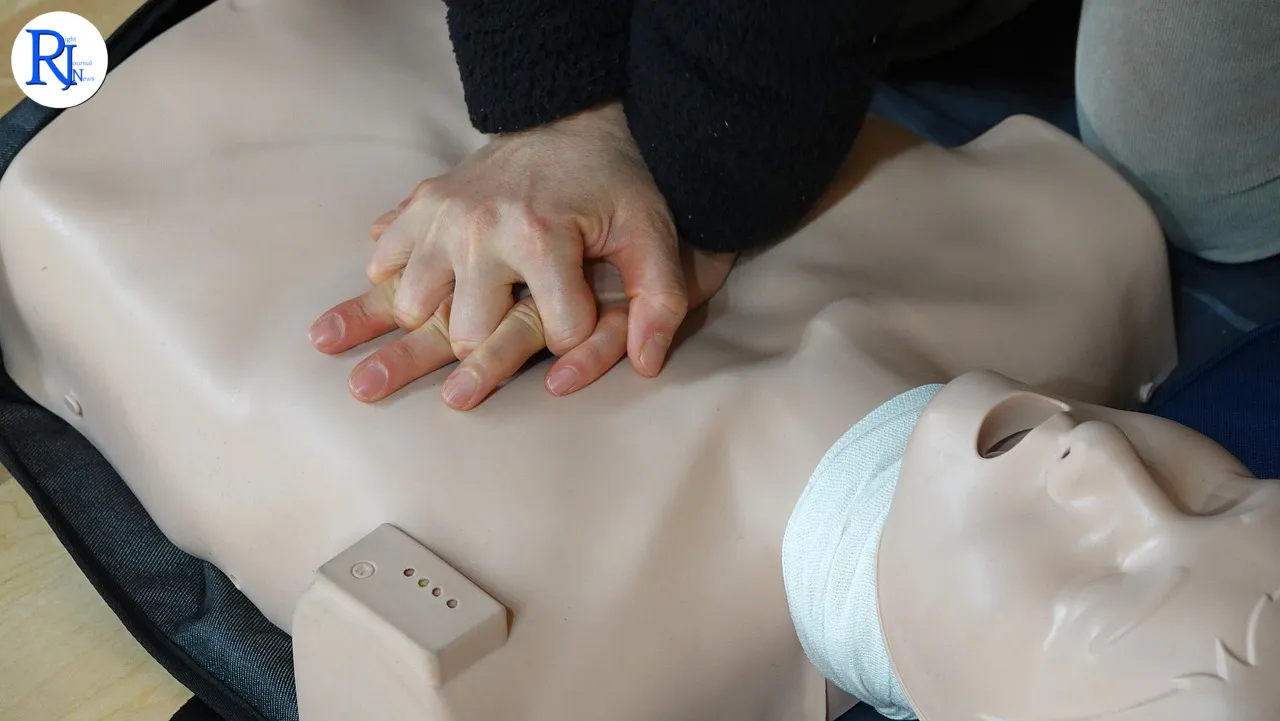A young man’s grief has become a public call for change. After losing both of his parents, Cameron McGerr now urges the UK to teach lifesaving first aid, including CPR, to every pupil. His question is stark: if schools had taught him these skills earlier, could he have kept his parents alive until help arrived? His appeal touches a nerve across the country. Out-of-hospital cardiac arrests affect tens of thousands of families each year, most often at home, where a loved one stands closest to the crisis. When that loved one knows what to do, the odds of survival improve. McGerr’s campaign speaks to that simple truth and asks schools to make it a standard part of education.
His push comes as emergency doctors, charities and teachers refocus on the value of bystander action. Health organisations say quick CPR can double or even triple a person’s chance of survival. They add that confidence matters as much as knowledge. A clear lesson in school can turn fear into action in those first vital minutes before an ambulance crew arrives. McGerr’s story gives this policy debate an urgent and human face.
Context and timing
BBC News highlighted McGerr’s campaign on 14 October 2025. The story sits within a wider UK discussion about first aid education and access to defibrillators. It also lands during the build-up to Restart a Heart Day on 16 October, an annual effort by ambulance services and charities to teach CPR across the UK.

A personal loss fuelling a national call for CPR in schools
Cameron McGerr lost both of his parents and now campaigns for lifesaving first aid to be taught in schools. He frames his case through experience. He asks whether early CPR training would have helped him act faster and with confidence. His message resonates with families who have faced sudden collapse at home and felt helpless while waiting for an ambulance.
His campaign does not stand alone. Charities, clinicians and many teachers share the same aim: more practical CPR lessons for young people. They argue that every teenager should leave school with the skills to call 999, start chest compressions and use a defibrillator. McGerr’s story adds urgency to that message. It makes a policy point feel direct and personal.
What UK pupils already learn about first aid and CPR
Each UK nation sets its own curriculum. In England, the government introduced CPR and defibrillator awareness to the secondary school curriculum in 2020 as part of health education. Wales includes lifesaving skills within its Curriculum for Wales. In Scotland, schools have flexibility, but national programmes and partnerships support CPR education. In Northern Ireland, schools decide whether to teach first aid, and many work with charities and ambulance services to deliver it.
Supporters say these policies mark real progress, but they also point to gaps. Not every school delivers practical sessions each year. Some teachers feel short of time, equipment or confidence. Leaders who back first aid education say schools need easy tools, lesson plans and support from local services. They also call for refreshers, not one-off sessions, so skills stick.
Why bystander CPR changes the odds in cardiac arrest
Cardiac arrest happens when the heart stops pumping blood. Every minute without CPR reduces a person’s chance of survival. Emergency doctors and charities describe a “chain of survival”: early recognition and a 999 call, early CPR, early defibrillation and advanced care. When a bystander starts compressions before crews arrive, survival odds rise. Health charities say early CPR can double or triple survival chances.
The UK sees around 30,000 out-of-hospital cardiac arrests each year. Most occur at home. Only a small share of people survive to leave hospital. That picture changes when a nearby person starts CPR at once. Experts say young people can learn these skills quickly. They also say practice matters. A short, hands-on school session can remove fear and build muscle memory for a real emergency.
Tools, training and the push for consistency
Charities and professional bodies have tried to make first aid easier to teach. The British Heart Foundation offers free resources, including an online tool that teaches CPR in about 15 minutes using a phone or tablet and a cushion. St John Ambulance and the British Red Cross provide ready-made lessons, videos and practical kits for classrooms. Local ambulance services often support “Restart a Heart” events in schools.
Schools that deliver CPR often fit it into health education, PE or tutor time. Teachers say clear lesson plans and simple equipment help. A manikin adds realism, but it is not essential. Hands-only CPR practice can still build confidence. Campaigners point to these resources and say every school can deliver a basic session. They also argue for refreshers each year, so pupils do not forget skills they learned in Year 8 by the time they leave school.
Defibrillators, data and faster help when every second counts
Defibrillators (AEDs) play a key role in cardiac arrest. They analyse heart rhythm and tell a bystander what to do. Modern AEDs give simple voice prompts, so even a first-time user can follow along. The UK now maps many community defibrillators on a national network called The Circuit, a partnership that helps ambulance services direct callers to the nearest device when they dial 999.
Technology also brings trained help to the scene. Many UK ambulance services use alert systems that notify nearby volunteers when a cardiac arrest call comes in. Those responders can start CPR or bring an AED before a crew arrives. Campaigners see these schemes and AED networks as proof that simple steps save lives. They say widespread school training completes the picture, because it puts basic skills into the hands of almost every teenager.
The case for starting young and repeating often
Teachers and clinicians say pupils can learn core lifesaving skills from early secondary school. They suggest a step-by-step approach: learn to spot cardiac arrest, call 999, start compressions at a rate of 100 to 120 per minute, and use an AED if one is nearby. In later years, schools can add recovery position, choking response and bleeding control.
Campaigners also stress practice. Short, repeated sessions throughout secondary school can build lasting confidence. They suggest creative formats: assemblies during Restart a Heart week, peer-led sessions, sports club tie-ins and parent evenings. They add that schools, community groups and local businesses can work together to signpost nearby AEDs and keep them in working order.
What families and pupils can do today
Families do not need to wait for policy change. Free online tools now teach CPR in minutes. Health organisations recommend that people review guidance regularly, save the 999 instructions on their phone and learn how to find an AED. They also advise that people log community defibrillators on official registers so ambulance services can direct callers to them.
Experts say people should remember three steps: call 999 as soon as you suspect cardiac arrest, start firm chest compressions in the centre of the chest, and use

